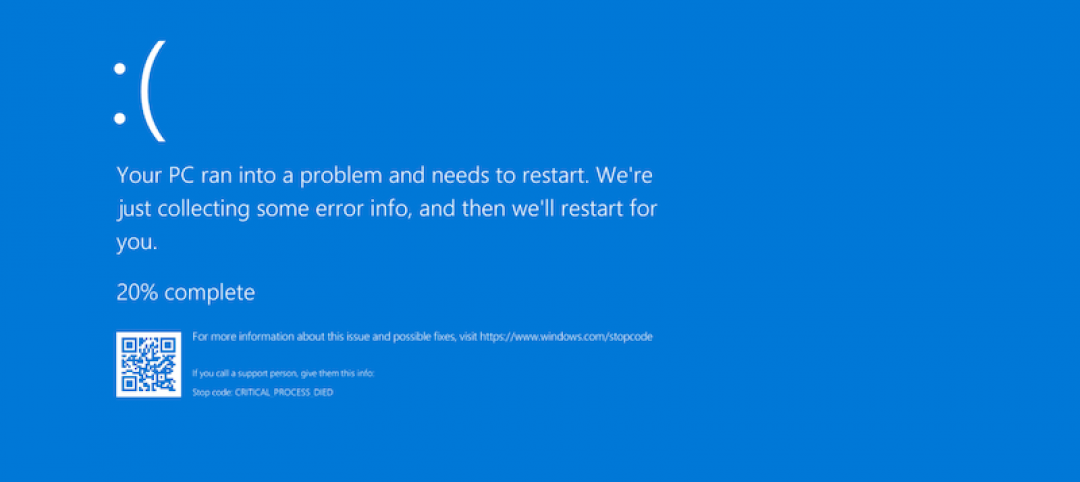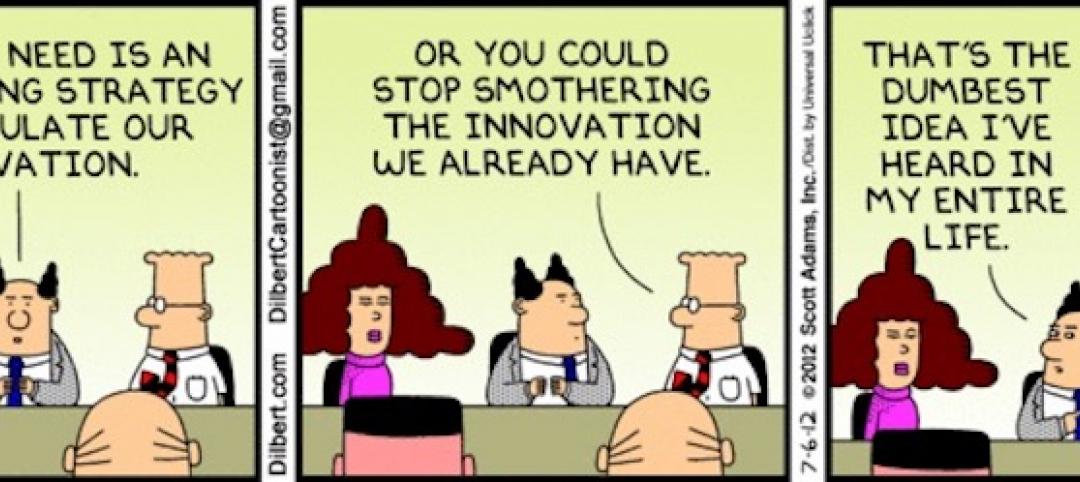If there is one common theme to the topics on this blog, it is the digital transformation in the world of buildings. It is a topic that elicits feelings of optimism for a better built environment, feelings of frustration stemming from slow and uneven change, and fear of unfamiliar forces affecting the core of our business models.
There is clearly no shortage of digital technology being used by the people that make and operate buildings. However, I often argue that while our technology is becoming more advanced, the fundamental processes at the core of design and construction businesses have largely remained unchanged for decades. I have sometimes used the analogy that our uses of technology in the construction industry is akin to using an F16 to get groceries up the street. Consider, for example, the all-too-common activity of creating data-rich 3D building information models in order to construct traditional paper-based documentation. Or consider the use of sophisticated computational design software to auto-name documentation sheet sets. The future seems close at hand given the technologies on our desktops and also far out of reach as incremental improvements to traditional methods continue to dominate our discourse and digital strategies.
True ‘Digital Transformation’ means confronting our often entrenched institutional, cultural, and professional habits and challenging the core assumptions of how we will be working in the future. In looking across the projects and strategies we have participated in as consultants, I have observed that there are four essential tactics for supporting larger digital transformations leading to innovation and creative opportunities.
Grow Digital Leadership and Literacy
For all the hype surrounding new digital tools, it is people that are ultimately the stewards of digital transformation. This means overcoming the immense challenges associated with changing habits, overcoming biases, and aligning stakeholders on new concepts. The firms that are realizing long-term digital transformation have positioned dedicated leaders, such as Innovation Directors, accountable for aligning competitive business goals with the adoption of new digital capabilities by employees. The emphasis in new leadership is a notably different from traditional IT roles as it positions digital leadership as a matter of business process evolution and the extension of services.
Investments in developing digital literacy for employees is also central to successful digital transformation. This might include regular formal training sessions in emerging topics such as data manipulation, analytics, and computational design. Or it might involve the formation of internal knowledge networks which facilitate continued discussion about how digital workflows are being applied in the business.
Key tactical questions to consider…
- Who is tasked with aligning your business with new digital workflows?
- Is digital literacy a stated requirement for your staff?
- How much of your budget is allocated to training on digital topics?
- How much time is allotted to your employee’s exploration into digital topics?
Create Data Resources
In the building industry, data is often discussed as a general or abstract concept: “Yes we have data. Who doesn’t?” But when the availability and access to data is evaluated, it is often revealed that data sources exist as series of disconnected files that may be isolated to the desktops of specific users or hidden away in the archives of past projects. In short, data may exist but it is often not integrated or readily available ‘at scale’ to create opportunities for insight.
Some of the clients we have worked with have begun to execute initiatives for making data readily available throughout their company. For example, a business may take their critical data stored in Excel spreadsheets and migrate it into a centralized database where teams can reliably acquire information without having to search for a specific file. Another example may be in the harvesting of critical project data into a database for the purposes of project benchmarking or trend identification. Whatever the case, making data readily available through clearly defined workflows and resources is a critical ingredient for realizing larger benefits of the digital workflow.
Key tactical questions to consider…
- How do you collect data today?
- How does your staff get access to data?
- What data does your business create and or possess?
- What data will be critical to evolving your business operations?
Enable Interoperability
I have written extensively about the challenges and opportunities for greater interoperability in the building industry. A single project may leverage a large number of proprietary software platforms across disciplines and trades. A business may rely on several systems to manage important business data. Among users of these systems, it is not uncommon to find frustration and confusion when it comes to transferring or managing data between these systems. Migrating data between Rhino and Revit or correlating data between and enterprise resource planner and a marketing system are common pain points often discussed but never completely resolved.
Enabling interoperability requires a multifaceted strategy for defining clear business processes, developing skills in data management, and building customized technology integrations. I have observed a trend among businesses for investing in creating tailored digital integrations to bridge the gaps between software platforms. Moreover, some of the most successful implementations growing skillsets through training and knowledge sharing that directly addresses the problems of data integration.
Key tactical questions to consider…
- How much money have you invested in integrating your digital systems?
- How does your staff share building data for collaboration?
- How does your staff integrate their data with the building supply chain?
- How are you working to reduce bottlenecks associated with data silos?
Invest in Research
Research remains a rare activity in the construction industry. It has been reported that less than 1% of revenues are put towards research and development compared to about 3%-4% in industries such as automotive and aerospace. In the context of digital transformation, I see research as enabling businesses to critically evaluate new processes, collect and synthesize data, and discover new ways of working backed by evidence.
R&D is a long-term commitment by a business which can sometimes be difficult to justify in the context of project priorities, slim profit margins, and the known high failure rate of innovation-related initiatives. However, many of the tactics outlined in this short article ultimately require R&D investments combined with mechanisms to feed results forward into meaningful implementations. The most ‘digitally progressive’ businesses I have worked with have made significant commitments to research as part of their core operations. This investment might come in the form of establishing research incubators, hiring professional researchers, or partnering with external experts or research institutions.
Whatever structure research may take, it is a key tactic for supporting digital transformation – and discovering the trajectory your business will take in the future.
Key tactical questions to consider…
- How much money do you allocate towards research and development?
- Do you partner with researchers or research institutions?
- Do you retain professional researchers as part of your staff?
- How are you providing rigorous research experiences to your staff?
More from Author
Nathan Miller | Apr 27, 2020
Computers are hard
Sure – computers today look nicer, the experience using them has improved, and we can do exponentially more with them following Moore’s law. But my central observation remains: computers are still hard to use.
Nathan Miller | Nov 26, 2019
Free Generative Design – A brief overview of tools created by the Grasshopper community
For over 12 years, a digital design community made up of professionals, researchers, and academics sprung up around Grasshopper.
Nathan Miller | Nov 11, 2019
Are you creating a culture that is toxic to innovation?
Why are good designers, talented technology experts, and architects leaving practice? Why won’t they stay?
Nathan Miller | Mar 7, 2018
Interoperability for the building industry – More wicked problems
This article is a follow up to Nathan Miller's 2016 article “The Wicked Problem of Interoperability”.
Nathan Miller | Dec 22, 2016
The success of your data strategy depends on healthy business practices
Data and digital tools are an absolute given to today’s building design and construction process. But creating a true data-driven workflow requires more than just a solid strategy, writes Proving Ground’s Nathan Miller.
Nathan Miller | Aug 22, 2016
The wicked problem of interoperability
Building professionals are often put in a situation where solving problems with the ‘best tool for the job’ comes at the cost of not being able to fully leverage data downstream without limitation, writes Proving Ground's Nathan Miller.












